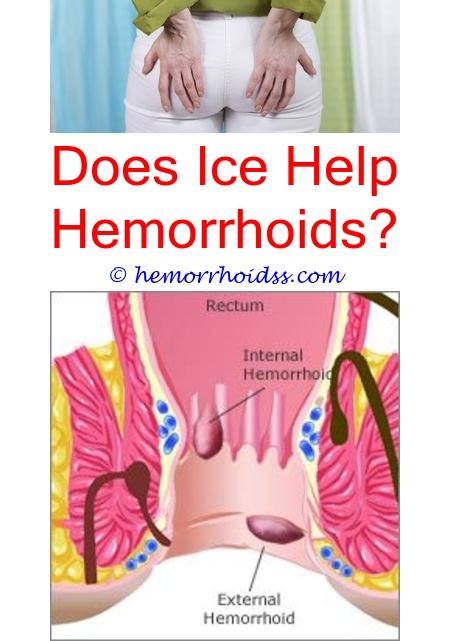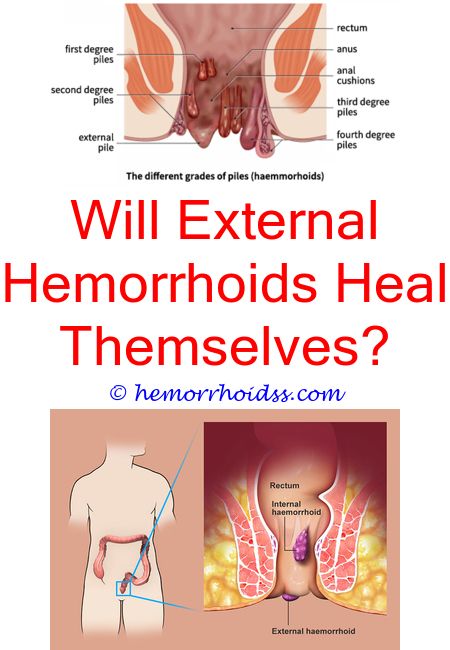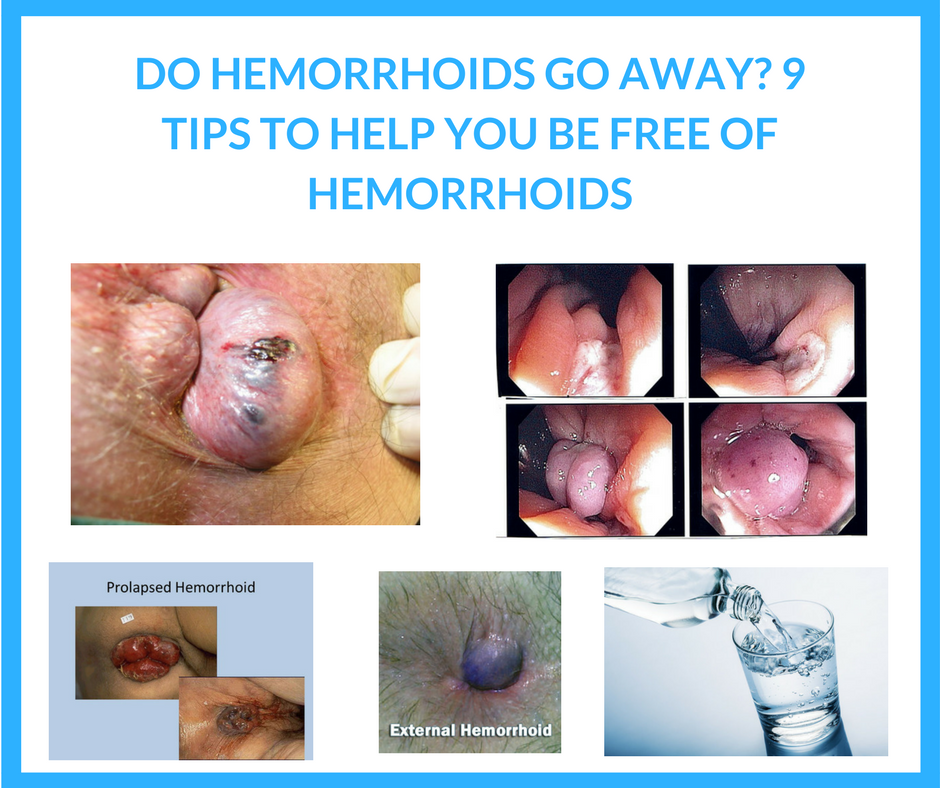What Are The Symptoms Of Hemorrhoids
You may have no noticeable symptoms from internal hemorrhoids. Sometimes, a bowel movement may irritate an internal hemorrhoid and cause bleeding.
If the internal hemorrhoid is pushed outside of your anal opening, you may have bleeding during bowel movements and symptoms in the anal area that include:
What Are Home Treatments For Hemorrhoids
You can try the following home treatments:
- Blot the anus gently after bowel movements with white toilet paper moistened with water or a cleansing agent, such as Balneol. You can also use moistened baby wipes or medicated pads, such as Tucks.
- Avoid rubbing the anal area. And avoid soaps with perfumes or dyes.
- Use hemorrhoid ointments, such as Preparation H.
- Dont strain while you are having a bowel movement.
- Apply ice several times a day. Also try applying moist heat several times a day, or sit in warm water .
- Eat more fiber, and drink more water.
- Take stool softeners.
You can also take nonprescription pain relievers. Acetaminophen can help with pain. Aspirin and other nonsteroidal anti-inflammatory drugs , such as ibuprofen and naproxen , can help with pain and swelling. Be safe with medicines. Read and follow all instructions on the label.
These treatments cure most small and some large internal hemorrhoids. They arent used for external hemorrhoids. They work by cutting off the blood supply to the hemorrhoid, which makes the hemorrhoid shrink or go away.
There are different ways to do this:
- Rubber band ligation. This is the most successful nonsurgical procedure. It is the one most often used for small and medium hemorrhoids. It involves tying off hemorrhoids with rubber bands.
- Coagulation. This procedure involves using heat, a laser, or an electrical current to create scar tissue around the hemorrhoids. Infrared photocoagulation uses infrared light to do this.
Foods That Can Help Heal Hemorrhoids
The condition called hemorrhoids, also known as piles, is incredibly unpleasant. This condition presents with swollen veins on or near ones rectum or anus. While unpleasant, there are several natural ways to treat this condition. Plus, foods make an enormous impact in helping to prevent flare-ups and calm then once they occur.
Also Check: What Can I Use For Hemorrhoids
Do Prolapsed Hemorrhoids Hurt
Prolapsed hemorrhoids tend to be more painful when sitting as opposed to standing or lying down. They may also hurt more during a bowel movement.
Prolapsed hemorrhoids can be especially painful if a blood clot has formed within the hemorrhoid. This is known as a thrombosed hemorrhoid.
A thrombosed hemorrhoid isnt as dangerous as a blood clot in your heart, for example, but it can be very painful. A thrombosed hemorrhoid may need to be lanced and drained to relieve the pain.
A prolapsed hemorrhoid may also be extremely painful if its strangulated, which means the blood supply to the hemorrhoid has been cut off.
Drink Plenty Of Water

Dehydration is a potential problem associated with constipation, since fluids or water is needed for fiber to travel smoothly through the digestive system. When you dont get enough water, bowel movements become hard and difficult to pass, and this will enlarge hemorrhoids and increase pelvic pressure.
A study published in the European Journal of Clinical Nutrition in 2003 indicated that fluid loss and fluid restriction can increase constipation, which worsens hemorrhoid symptoms. When considering how to make hemorrhoids go away fast, it is recommended to drink at least one glass of water during each meal or snack daily.
You May Like: What To Avoid With Hemorrhoids
Advanced Treatment For Hemorrhoids
Even with the treatments listed above, there are some situations that may require medical treatment – especially if your hemorrhoids are recurrent!
Fortunately, even if your doctor determines treatment is necessary, you have many options, as there are several procedures that can be done in an office visit that do not require a separate surgery or anesthesia. Even if your case requires surgical treatment, most options are minimally invasive.
After a physical exam, your doctor will make a decision about what treatment may be necessary based on the location and severity of your hemorrhoids. If you have internal hemorrhoids, a colonoscopy may also be required. There might also be complications and risks to assess, such as whether you are taking a blood thinner or may be at risk for sepsis, which can be a risk with procedures like a hemorrhoidopexy.
In a hemorrhoidopexy or a sclerotherapy, the vein is left in place. Rather than removing it, the vein is fixed in place or sealed, depending on the procedure. Doctors typically only recommend these kinds of operations if your hemorrhoids have not responded to conservative treatment.
In a hemorrhoidectomy, the bulging or prolapsed vein is removed to prevent further bleeding and discomfort. A hemorrhoidectomy can be performed to mitigate both internal and external hemorrhoids. Typically, anesthesia is required for the surgery, though you will typically be released that day.
What Can You Do For Relief
If you have hemorrhoids, lifestyle changes may help them heal faster. One cause of hemorrhoids is straining during bowel movements. Adding more high-fiber foods to your diet, such as vegetables, fruits, and whole grains, can help soften your stool and make it easier to pass.
You should also drink plenty of water to help relieve constipation and reduce straining during bowel movements.
Here are some additional things that may help relieve symptoms:
- Minimize the time you sit on the toilet.
- When you feel the urge to move your bowels, go as soon as possible.
- Put your feet on a small stool during bowel movements to change the position of your rectum.
- If youre pregnant, sleep on your side. This will help relieve some of the pressure around your anus.
- Ask your doctor about taking a stool softener or a fiber supplement, such as psyllium or methylcellulose . A tablespoon of mineral oil added to food can also help soften stools.
- Keep the anal area clean. Take regular showers, and use moist wipes to clean the area around your anus after you pass a bowel movement.
- Use a sitz bath or sit in a warm tub for a few minutes to bathe the anal area.
You may also try using over-the-counter topical medications to ease discomfort, such as phenylephrine hemorrhoidal gel . These products are used if the hemorrhoids are bulging and inflamed.
You May Like: How To Stop Bleeding Internal Hemorrhoids
Chamomile Oil For Reducing Hemorrhoid Pain And Inflammation
Chamomile oil is one of the best essential oil to relieve pain and inflammation, including hemorrhoid pain.
A 2014 report on many studies into the healing properties of chamomile essential oil found that it can be used to treat hemorrhoids. Topical preparations containing chamomile oil can reduce anal inflammation caused by hemorrhoids.10
What Are The Symptoms
The main sign that you have a prolapsed hemorrhoid is the presence of one or more lumps around the anus. This will only occur if the prolapse is significant.
In some cases, you can gently push a lump back through the anus. While that changes the hemorrhoids location and may ease some symptoms, the hemorrhoid is still present.
You May Like: How To Cure Hemorrhoids At Home
Medical Procedures To Shrink Hemorrhoids
If medications and remedies dont alleviate your discomfort and need further help, plenty of safe and fast procedures are available. Many methods only require one quick office visit. The risk of hemorrhoids returning is very low. And almost all of the procedures are minimally invasive, relatively painless, and produce lasting results.
Procedures include:
- Traditional : The hemorrhoids are removed by an instrument, usually a scalpel. This is a standard procedure that easily keeps hemorrhoids from coming back.
- Rubber Banding Ligation: Common and proven highly effective, the external hemorrhoids are banded near the base to cut off blood flow, allowing the unwanted skin tag to fall off naturally.
- Infrared Therapy: This method uses an infrared laser to create fibrous tissue, preventing blood flow. This procedure will shrink hemorrhoids, and the skin tags will then fall right off.
- Electrotherapy: Much like the traditional method, electrotherapy works by using a heated element, like a cautery pencil to remove the troublesome issue safely.
- Cryotherapy: After a local anesthetic, the doctor will freeze and remove the hemorrhoid. This method may leave you with a small amount of discomfort and requires about two weeks of recovery.
- Stapling: This method uses circular titanium staples and shares a similar goal with the same desired results as banding, infrared, and cryotherapy.
Final Thoughts On Choosing The Best Foods To Treat Hemorrhoids
This condition is undoubtedly an uncomfortable one. When treating the likes of piles, its important to create a diet that is focused on treating inflammation, softening stool, and alleviating similar symptoms of this condition.
If youre fighting off hemorrhoid side effects, keep this guide in mind. While you may need additional medication to treat this condition, the above 18 foods are excellent natural ways to treat this issue.
Also Check: What To Do For External Hemorrhoids
What Is The Best Medicine To Shrink Hemorrhoids
The two most commonly used topical ointments designed to treat hemorrhoid itching and pain are ointments that contain either cortisone or lidocaine. Cortisone is an anti-inflammatory steroid that may help shrink hemorrhoids. As the hemorrhoids begin to shrink, very often the itching will also subside.
How To Treat Recurring Or Chronic Hemorrhoids

While there are many options available to treat the symptoms of chronic hemorrhoids, none of them are able to resolve the underlying issue. Some home remedies may offer short-term relief, but this is temporary and may result in the external hemorrhoid disease progressing into a more serious condition.
Treating your chronic or recurring hemorrhoids is quite easy: consult with your medical professional and choose a treatment that is 99% effective, fast, and painless, such as the CRH ORegan System. This hemorrhoid banding treatment takes about a minute to complete, has a complication rate of less than 1%, and fewer than 5% of patients experience a hemorrhoid recurrence within two years.
Read Also: Does Desitin Help With Hemorrhoids
What Causes Internal And External Hemorrhoids And Simple Ways To Treat Them
Hemorrhoids are usually caused by increased pressure due to pregnancy, being overweight, or straining during bowel movements. By midlife, hemorrhoids often become an ongoing complaint. By age 50, about half the population has experienced one or more of the classic symptoms, which include rectal pain, itching, bleeding, and possibly prolapse . Although hemorrhoids are rarely dangerous, they can be a recurrent and painful intrusion. Fortunately, there’s a lot we can do about hemorrhoids.
What Are External Hemorrhoids
External hemorrhoids get their name from where they are found near the anus or lower rectum. They are the more obvious affliction and appear under the skin on the outside of the anus. This type of hemorrhoid typically becomes itchy, feels hard and lumpy, and often becomes painful or extremely uncomfortable, especially when sitting. If a blood clot forms inside the hemorrhoid, a person can experience sharp and severe pain. Ultimately, the clot will dissolve over time, but can leave a reminder it was there in the form of excess skin or a skin tag. External hemorrhoids usually form due to excess straining or when one sits on the toilet for too long.
Recommended Reading: What To Do For Inflamed Hemorrhoids
Tips To Avoid Hemorrhoids During Pregnancy
When you’re pregnant, your body goes through several changes, and one of them is swollen veins. During prenatal classes, talk to other expectant moms, share your experiences and ask your instructor about natural therapies.
Hemorrhoids during pregnancy can be avoided by taking the following steps:
How Do Doctors Treat Hemorrhoids
Doctors treat hemorrhoids with procedures during an office visit or in an outpatient center or a hospital.
Office treatments include the following:
- Rubber band ligation. Rubber band ligation is a procedure that doctors use to treat bleeding or prolapsing internal hemorrhoids. A doctor places a special rubber band around the base of the hemorrhoid. The band cuts off the blood supply. The banded part of the hemorrhoid shrivels and falls off, most often within a week. Scar tissue forms in the remaining part of the hemorrhoid, often shrinking the hemorrhoid. Only a doctor should perform this procedureyou should never try this treatment yourself.
- Sclerotherapy. A doctor injects a solution into an internal hemorrhoid, which causes scar tissue to form. The scar tissue cuts off the blood supply, often shrinking the hemorrhoid.
- Infrared photocoagulation. A doctor uses a tool that directs infrared light at an internal hemorrhoid. Heat created by the infrared light causes scar tissue to form, which cuts off the blood supply, often shrinking the hemorrhoid.
- Electrocoagulation. A doctor uses a tool that sends an electric current into an internal hemorrhoid. The electric current causes scar tissue to form, which cuts off the blood supply, often shrinking the hemorrhoid.
Outpatient center or hospital treatments include the following:
Sometimes complications of hemorrhoids also require treatment.
Read Also: How Do You Know You Have Internal Hemorrhoids
What Role Do Toilet Habits Play
Straining during a bowel movement can be painful and make hemorrhoid problems worse. But you can avoid straining by
- preventing constipation, because hard stools automatically make you push harder
- paying attention to your bodys signals, such as the urge to go to the toilet waiting too long before you go can lead to constipation
- being relaxed and taking your time when you go to the toilet.
What Are Two Types Of Hemorrhoids
Hemorrhoids are enlarged, swollen veins in the lowest part of the rectum and anus. These veins bulge and get irritated, especially when the patient defecates, and cause bleeding. Hemorrhoids are also commonly called piles. It is one of the most common causes of rectal bleeding. Hemorrhoids occur in adults. It can cause significant pain and discomfort if left untreated.
There are two types of hemorrhoids:
- Internal hemorrhoids: They are present deep inside the rectum. They are usually not seen externally or felt and are painless.
- External hemorrhoids: They are present under the skin surrounding the anus. They are painful because of the painful, sensitive nerves surrounding the anus.
Hemorrhoids may go away on their own or with home remedies in a couple of weeks. If the hemorrhoids dont improve or the symptoms worsen, it is advised to consult a doctor to seek medical treatment.
Don’t Miss: How To Treat Rectal Bleeding From Hemorrhoids
When To Call A Doctor
If you have any pain or bleeding in your anal area, call your doctor right away. These may be signs of hemorrhoids or another condition. Any perineal discomfort or unusual discharge that doesnt go away after a few sitz baths warrants a call to your doctor to rule out an infection or other causes.
If youre pregnant or have recently given birth, ask your doctor or nurse about when you can start taking sitz baths. Theyll likely give you specific instructions on when and how to take them.
Below are some frequently asked questions about sitz baths.
What Is Stapled Hemrroidectomy

The following are pictures of the stapled hemorrhoidectomy procedure.
- Picture of Hollow Tube Inserted into the Anal Canal and Pushing up the Hemorrhoids
- Picture of Internal Hemorrhoids in Anal Canal
- Picture of Suturing the Anal Canal Through the Hollow Tube
- Picture of Bringing Expanded Hemorrhoidal Supporting Tissue into the Hollow Tube by Pulling on Suture
- Picture of Hemorrhoids Pulled Back Above Anal Canal After Stapling and Removal of Hemorrhoidal Supporting Tissue
Also Check: How To Treat Swollen Hemorrhoids
Improving Your Diet And Lifestyle